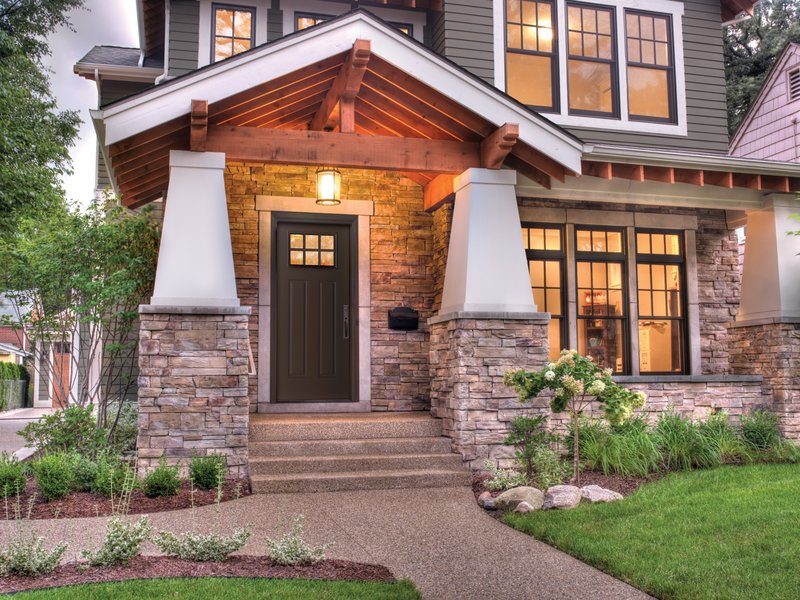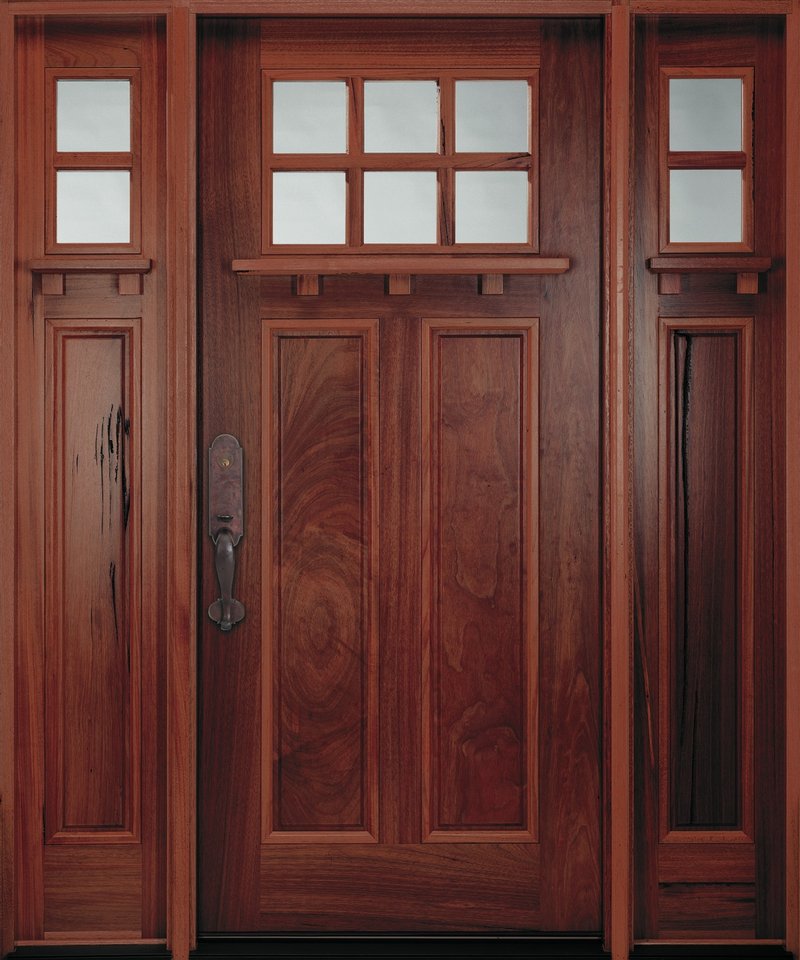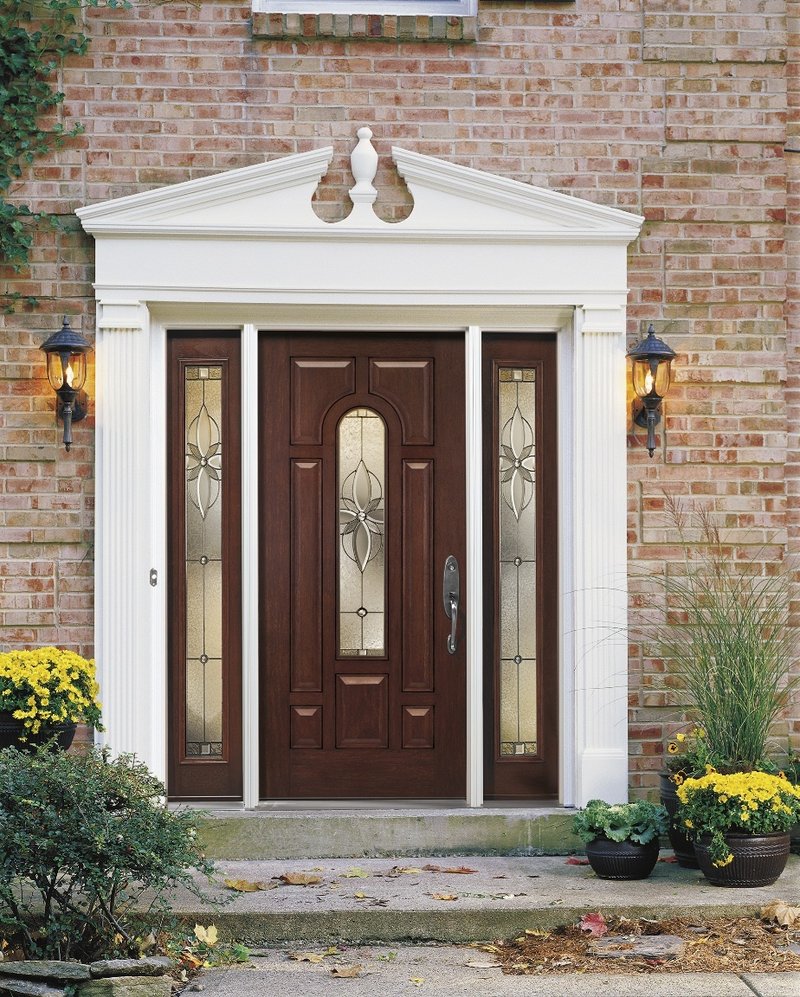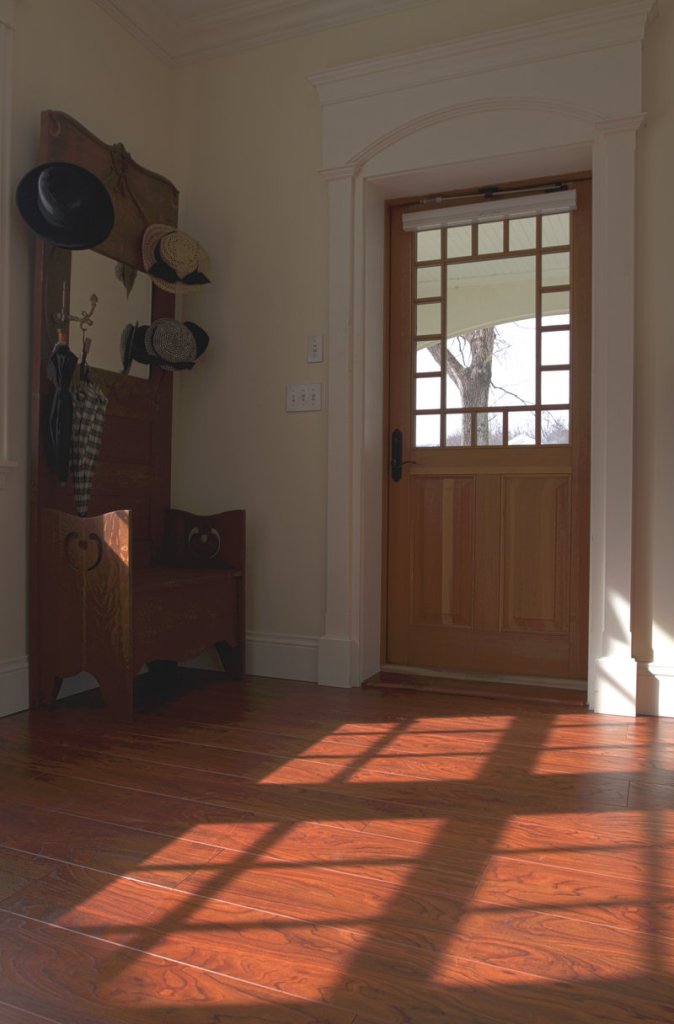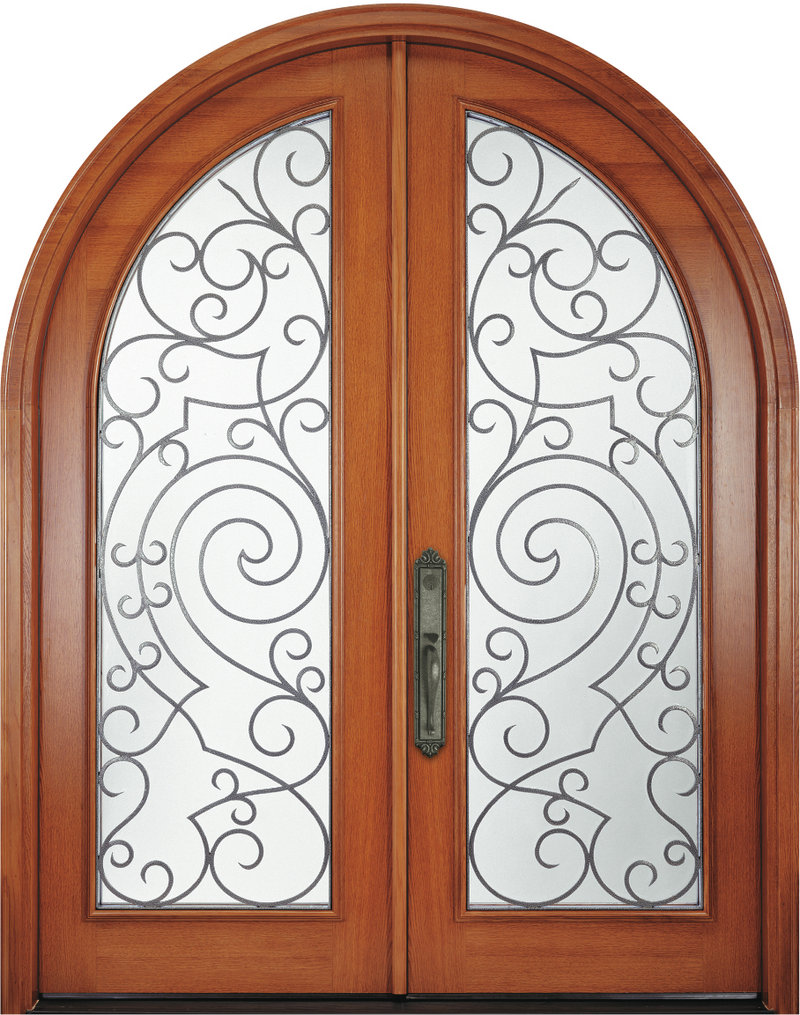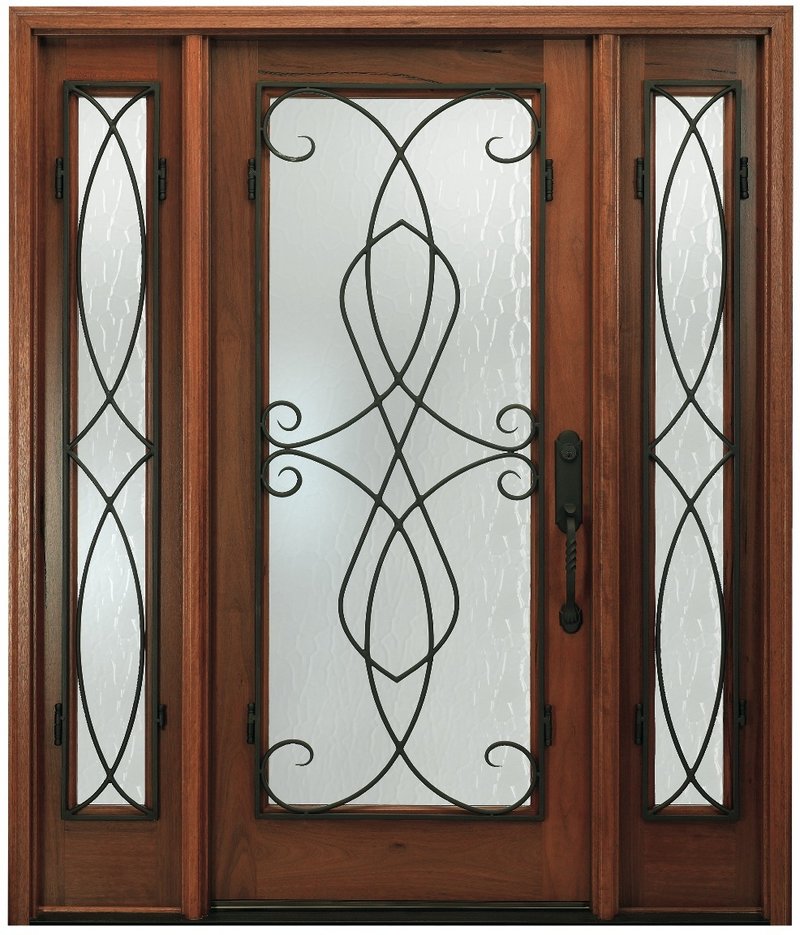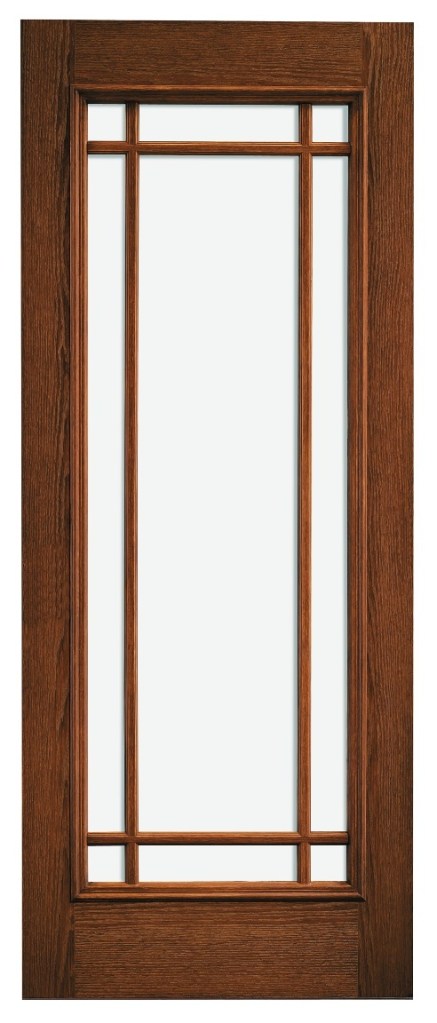The weather is getting colder, and that means your house might be getting draftier, especially if your front door is old and rotting.
Doors can be replaced year-round. Late fall and even the middle of winter may actually be a better time to do it, because prices come down and consumers can take advantage of specials and discounts.
This may also be a good time for door replacement because of the economy. An entry door that pops adds to curb appeal, and can be an easy way to update the look of a home.
“It’s the focal point as you walk up to somebody’s house, so you do want it to stand out,” said Mark Swift, a vice president at Pella Windows and Doors Inc. “It’s sort of the jewel of the home.”
But homeowners typically start shopping for a new front door because they are concerned about energy efficiency.
“Many times, we’ll walk into a home and you’ll see they’ve got a towel laying across the threshold to keep the snow and air from blowing in at the bottom,” Swift said. “That’s a general need that drives the urgency of the search.”
Once the shopping starts, there are a couple of key things to think about: Materials and style.
When it comes to materials, there are a lot more choices today than there were 20 years ago. At the most basic level, there are three choices: Steel, fiberglass and wood.
“Steel is the least amount of money, but not great for this environment,” says Rob Shubert of Hancock Lumber’s Home Again store in South Portland. “They’re cold, so they’ll bring the cold inside. They’ll rust. If you get a ding, they’re tough to fix.”
Fiberglass is much more popular. It’s more energy efficient than steel, and can be stained to look just like a wood door.
“Fiberglass doors are broken down into two categories: Smooth fiberglass, which is entry level, or wood grain fiberglass, which today are very common,” Shubert said. “You can stain to look like real wood and be Energy Star compliant. And if you get some high-end fiberglass, it’s really hard to tell the difference.”
Wood doors are the most expensive. They’re beautiful, but expand and contract with the weather, and require regular maintenance.
“Anywhere near the ocean, you would definitely not want to have a wood door,” Swift said.
Homeowners who want a wood door also have to think about things such as sun exposure and what color they’re going to paint the door.
In order to validate their warranty, most wood door manufacturers require a certain amount of overhang over the door to protect the door from the sun, wind and rain, says Bob Loranger of Loranger Door and Window in South Portland.
One Canadian door manufacturer, Lemieux Doors, recently introduced a torrefied wood door that’s good for situations where there’s little protection from the weather but the homeowner still wants a wood door. Torrefied wood is put through a special process before it is made into a door.
“It’s almost bringing it to the point of flash burning so it kills all of the cells, so basically the door won’t absorb moisture,” Loranger explained. “It becomes inert, in other words. And that door comes with a 20-year warranty, which is unheard of.”
There are also more options today when it comes to door frames. Frames are made of primed wood, and can be problematic in Cape Cod or Colonial-style homes where water is coming off the roof without gutters, splashing onto the steps and then back onto the door frame.
“The other thing is, people typically won’t shovel that area on the formal front entrance if it hardly gets used, so then you’ve got a freeze-thaw happening,” Loranger said. “So what ends up happening is, the joint between where the frame meets the sill gets compromised, and that just wicks the water up and rots the frame out.”
Some manufacturers now make frames out of weather-resistant composite material that can be painted or stained. The composite part of the frame may be just at the bottom, or it may be the entire frame.
Using composite materials, vinyl wrapping or some other form of protection on the frame can add an extra $100 to the cost of the door, but Shubert says it’s money well spent.
“If your frame rots, you replace the whole door,” he said. “Usually people don’t have problems with the panel, they have problems with the frame.”
When it comes to style, consumers are snapping up historical styles and “definitely trying to get away from the fake, plastic-y look,” Shubert said. “Shaker style is very popular right now, interestingly enough.”
Craftsman-style doors are also hot.
“A lot of the Craftsman series doors have really come on strong, and people are liking that style, whether it’s interior or exterior,” Loranger said. “People are tired of the traditional six-panel look.”
Once the decision is made about materials and style, the next thing to consider is whether to add decorative glass, either with sidelights or in the door itself.
Glass allows more light to enter the home, and there are styles that still allow for privacy.
Clear glass with no design on it is still the biggest seller, mostly because it’s less expensive. Decorating glass is called “caming,” and there are literally dozens of caming options.
“When you get to decorative glasses, those can double or triple the price of your door,” Shubert said. “They’re pretty pricey. But it’s your personality statement. It’s your front door.”
Shubert says he’s been selling more doors that have blinds in between the glass so that more light comes in but there’s still privacy.
Clear glass might add $75 to the cost of a door, while ornate decorative glass can run $300 to $1,000 extra, Loranger said.
How much consumers spend on a new door varies widely, because there are so many different options available in materials and style. Installation can be done in a half a day to a day, but it usually costs extra.
“People can spend $500 on a door or $5,000 on a door,” Swift said. “We sell tons of those at both of those price points every day. A wood door with sidelights, high-end ones, they can get up to $10,000. That’s usually in a big custom home that’s got to be the right design and everything else, but that’s not all that uncommon.”
Staff Writer Meredith Goad can be contacted at 791-6332 or at:
mgoad@pressherald.com
Twitter: MeredithGoad
Send questions/comments to the editors.


